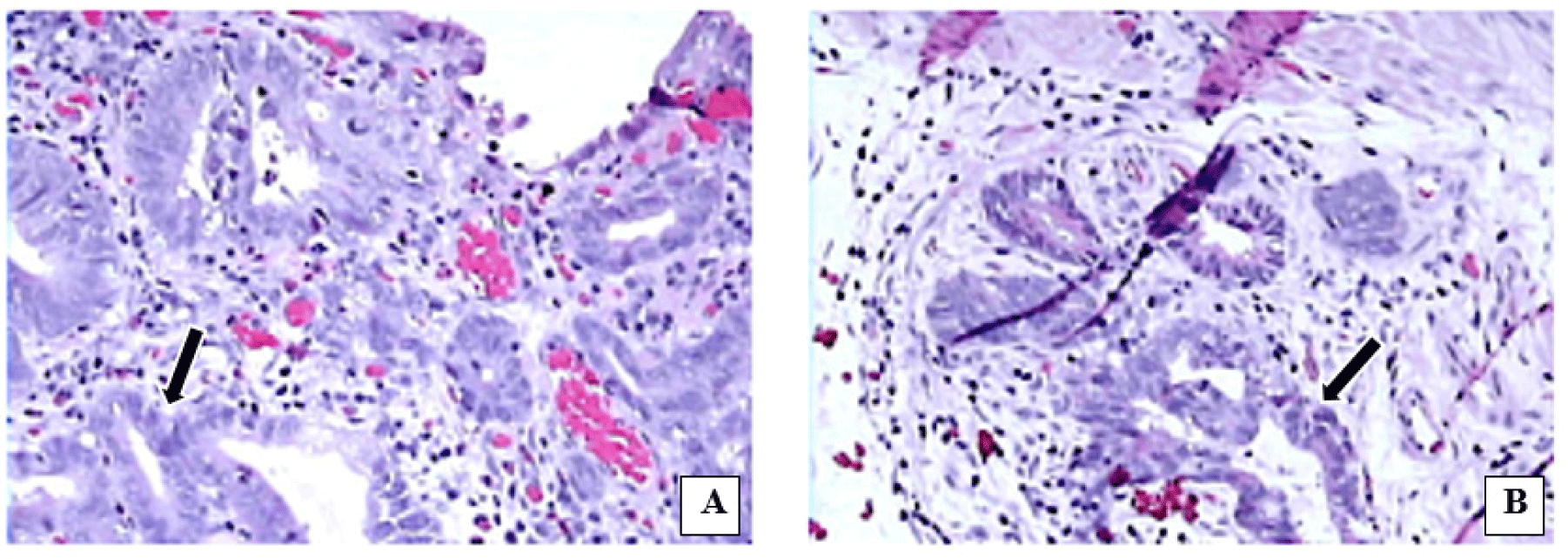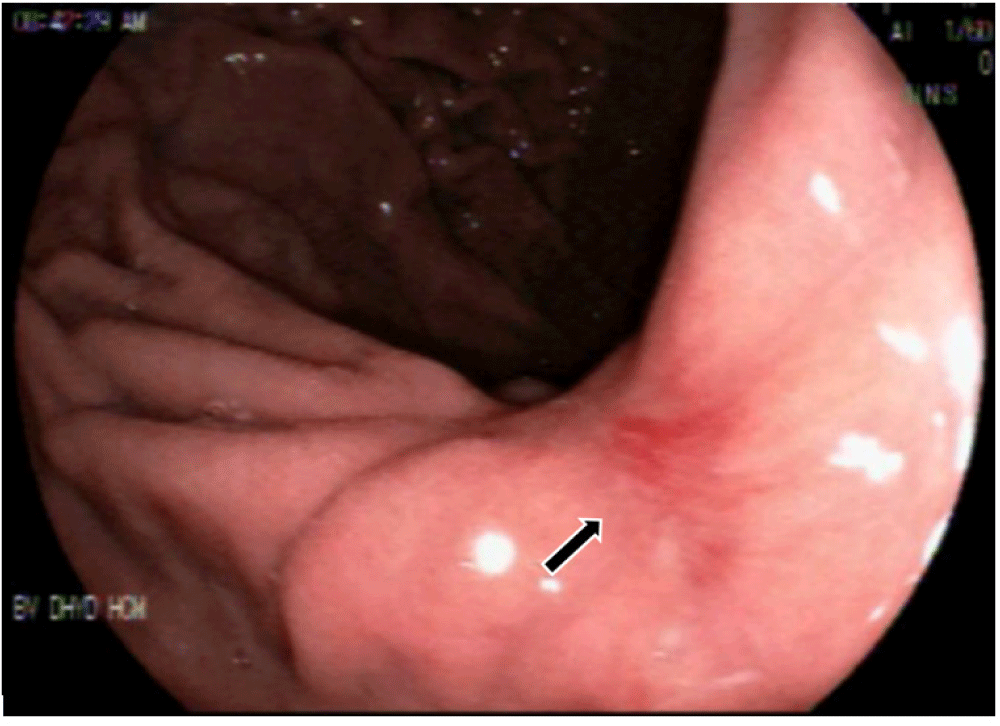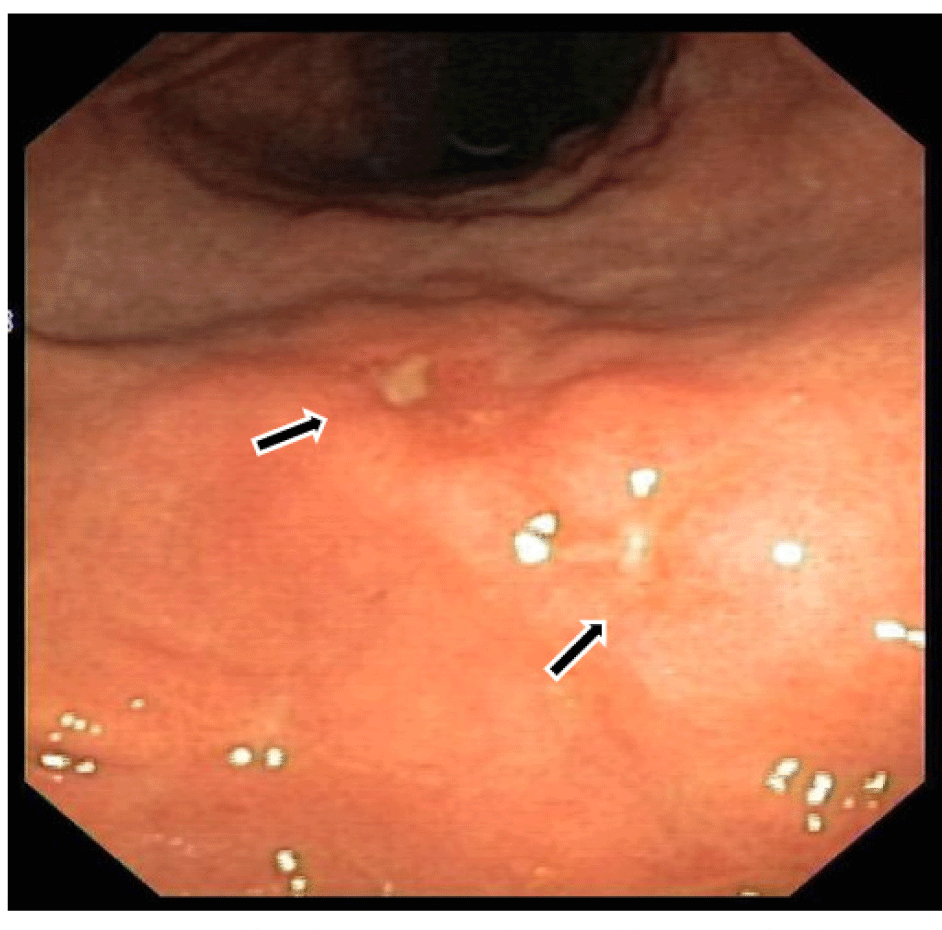1. INTRODUCTION
Early gastric cancer (EGC) is defined as a cancer confined to the mucosal or the submucosal layer (T1 cancer), and regardless of whether regional lymph node metastases are present [5], Endoscopic submucosal dissection (ESD) was developed in the late 1990s as an advanced therapeutic endoscopy; and in 2015, ESD has become a standard treatment for early digestive cancers in Japan and in many other countries [4], For treatment of EGC by ESD, Japanese experts advance the expanded criteria: (1) a differentiated intramucosal adenocarcinoma ≤ 2 cm, without ulcer formation; (2) an ulcer ≤ 3 cm in diameter, with differentiated intramucosal adenocarcinoma; (3) a differentiated adenocarcinoma that has invaded the submucosa, size ≤ 3 cm in diameter [3,6], Surgery is chosen for other lesions and advanced gastric cancers [6].
Although ESD is performed for early gastric cancer, there are still many difficult problems in technique of this procedure. The difficulty of gastric ESD depends on the big size and location of a tumor, presence of severe submucosal fibrosis... Therefore, we introduce our first experiences in Viet Nam in using Clutch cutter and IT knife 2 to make ESD a safe procedure in treatment of EGC which has severe submucosal fibrosis.
CASE PRESENTATION
In this study, we describe a case of EGC in a 62-year- old man felt an epigastric discomfort for two months. This patient had no other symptoms. Physical examination showed no abnormalities, and laboratory findings were within normal limits. Under the white light conventional esophagogastroduodenoscopy (EGD), we detected a suspected early gastric cancer type 0 - Ila + Ilc (Japanese classification for early gastrointestinal cancers) and the size of this lesion was 15 mm in diameter. This lesion was located at the incisura angularis (Fig. 1). We found this was a differentiated-type adenocarcinoma with a clear demarcation line, irregular pit pattern and microvascular pattern by using narrow-band imaging (NBI) magnifying endoscopy (Fig. 2). We took one target biopsy and the pathology of this specimen revealed the well-differentiated adenocarcinoma (Fig. 3). We took informed consent before ESD and this patient agreed to this publication. This study was carried out with approval from the ethical committee of University Medical Center at Ho Chi Minh city, Viet Nam.
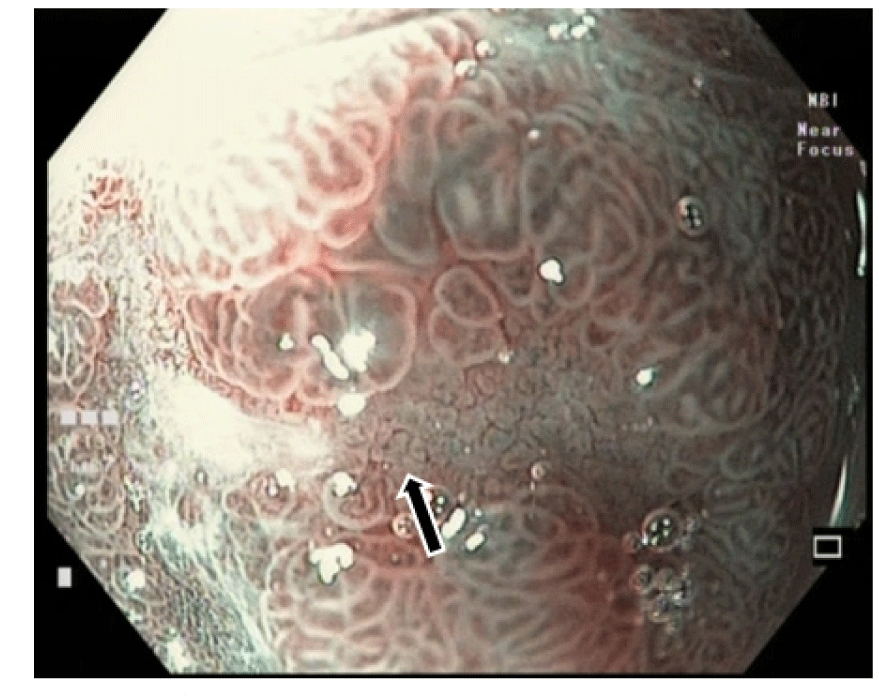
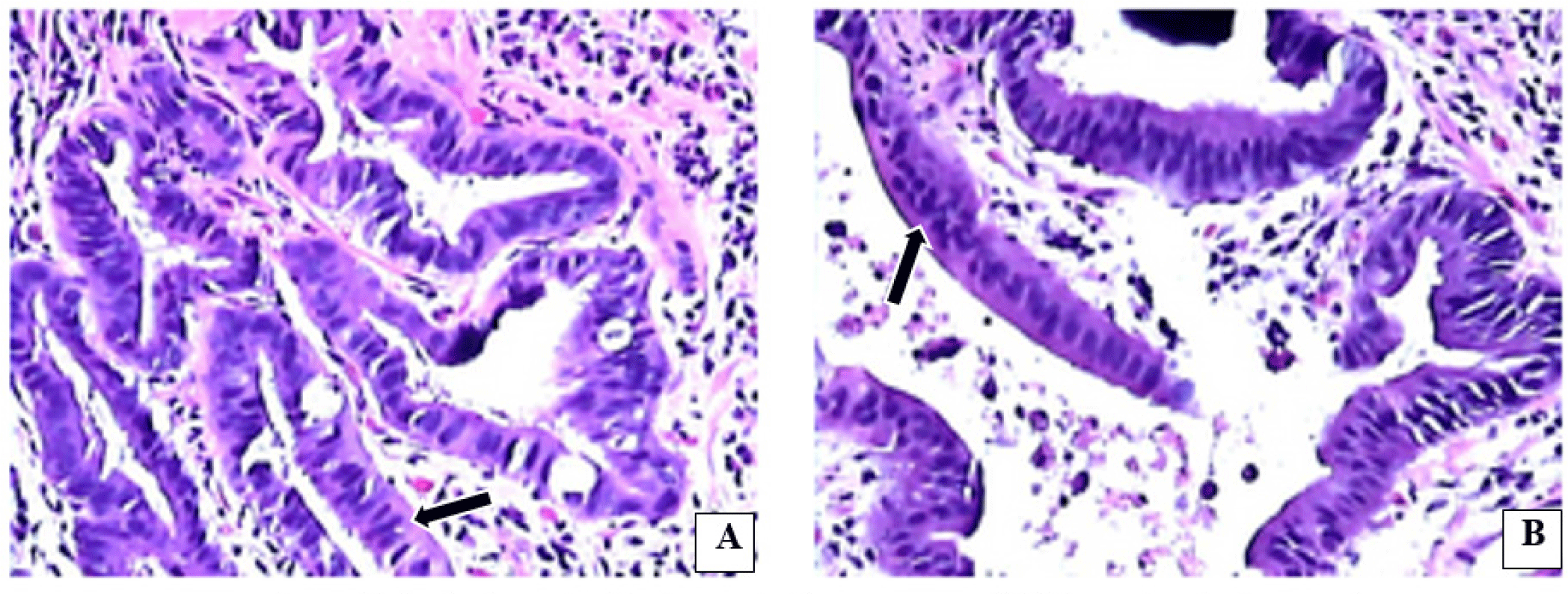
We performed ESD by using a single-channel endoscope (GIF HQ190; Olympus Medical Systems Co., Japan) with an attachment (D-201-11804; Olympus Medical System Co., Japan). To reduce intraluminal gas, a CO2 indufflation pump (Mediavator, USA) was used during the procedure. For this ESD, we used electrosurgical generator which was named VIO300D (ERBE, Tübingen, Germany). We set this generator to the Endo-Cut mode (Effect 3, 60W) for incision of the mucosa and to the Endo-Cut mode (Effect 3, 60W) for dissection of the submucosa. Bleeding was controlled using Coagrasper (FD-411UR; Olympus Medical System Co., Japan) in the soft coagulation mode (50W). A combination of 0.4% sodium hyaluronate (MucoUp; Seikagaku, Tokyo, Japan) and indigo carmine was injected into the submucosal layer to lift the lesion up. Then, we performed circumferential cutting with a dual knife (KD-655L; Olympus Medical System Co, Japan). During the submucosal dissection, we found submucosal white muscular structures which were severe submucosal fibrosis (Fig. 4). We used Clutch cutter (DP2618DT; Fujifilm Co., Japan) and IT knife 2 (KD- 611L; Olympus Medical System Co., Japan) for dissection of these severe submucosal fibrosis (Fig. 5). Finally, ESD was performed sucessfully without perforation and severe bleeding (Fig. 7). We performed en-bloc resection and the size of resected specimen was 60 x 35 mm (Fig. 6). The time of this procedure was 150 minutes.
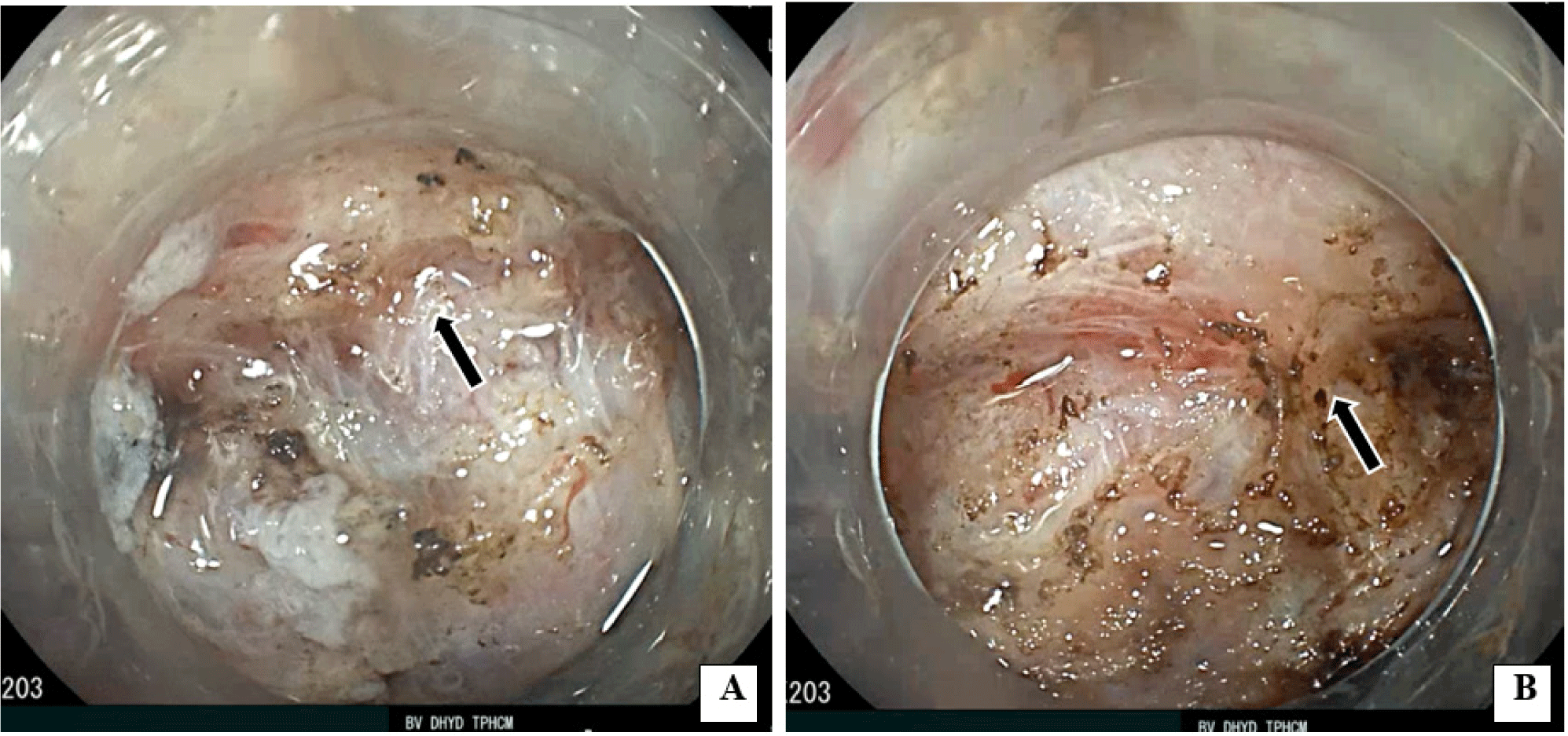
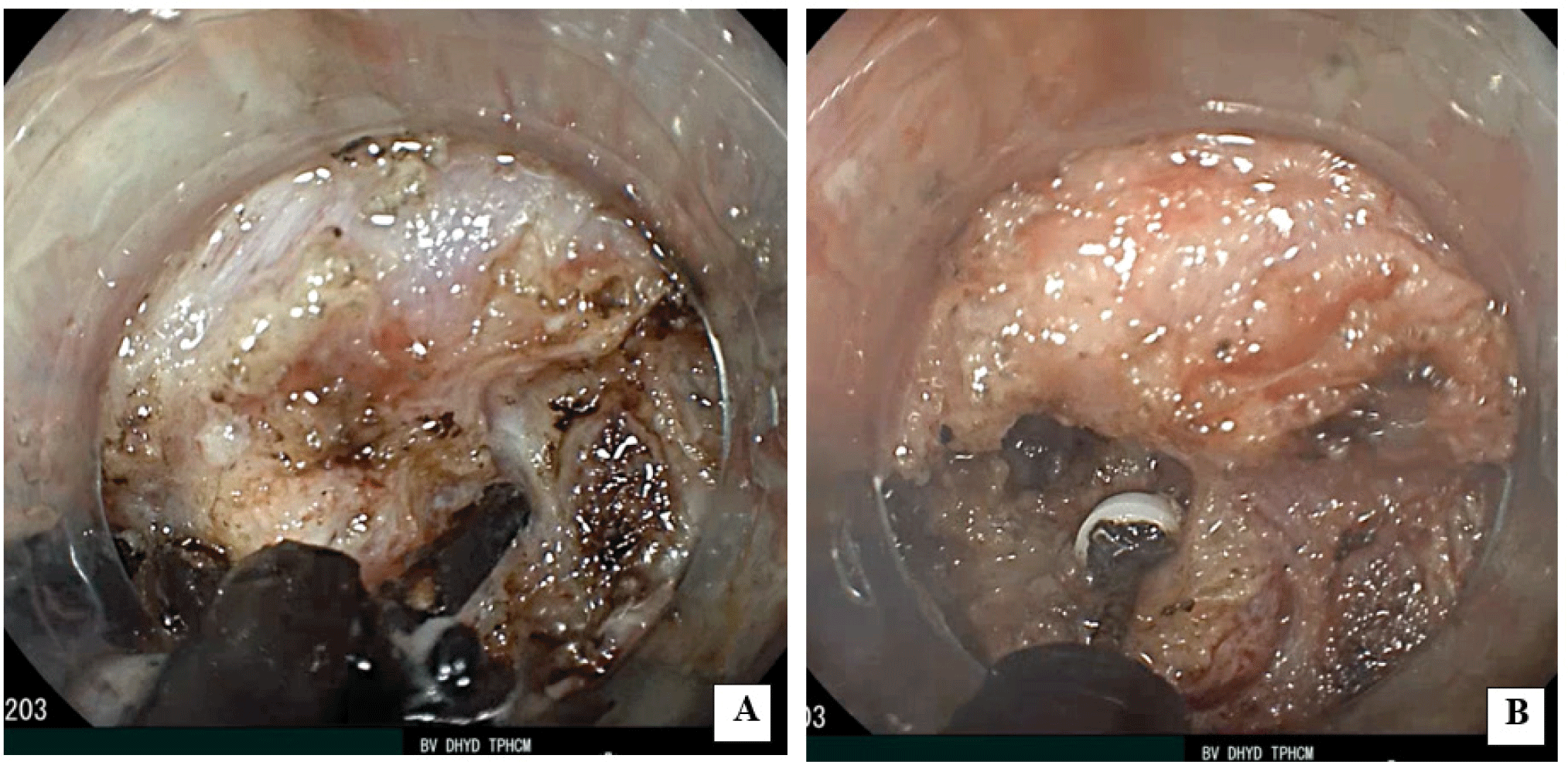
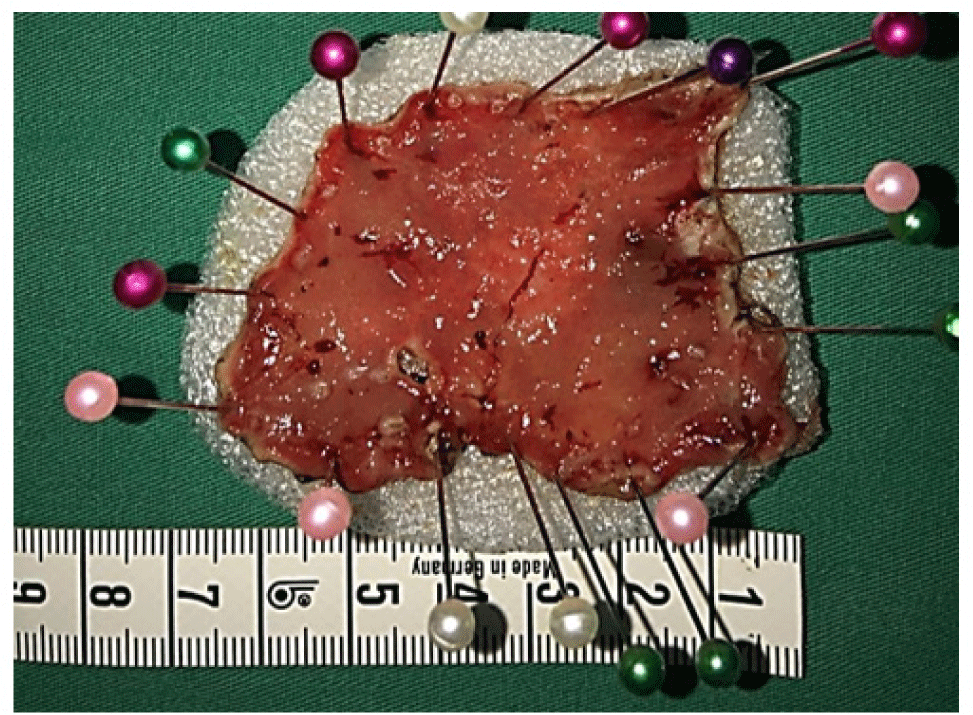
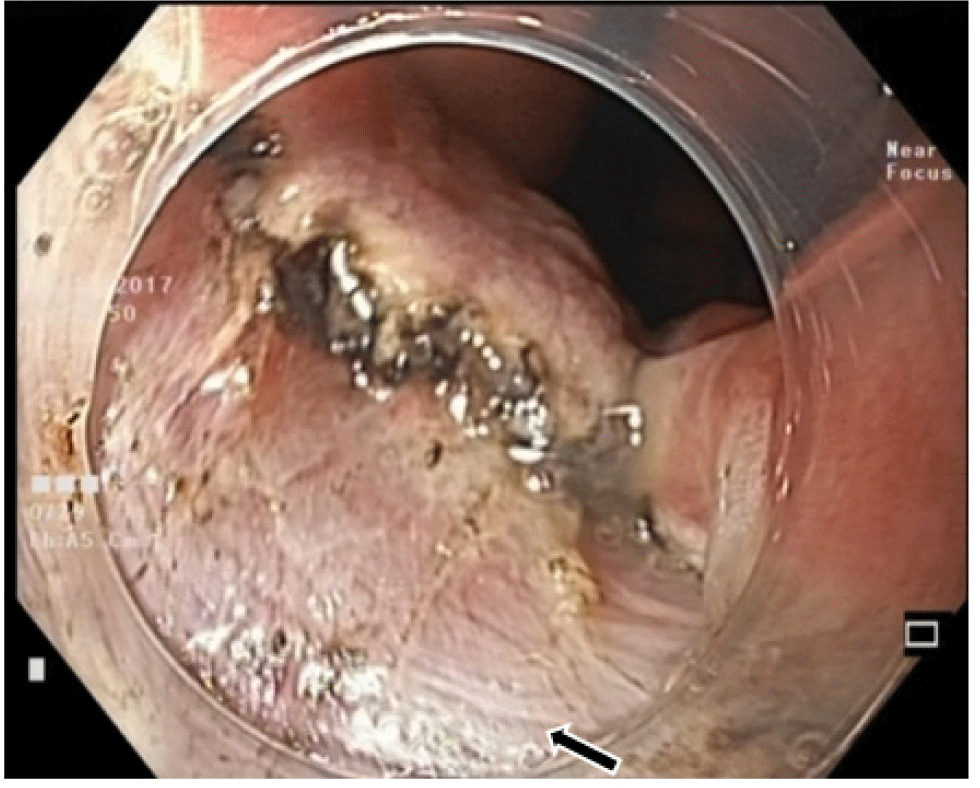
3. DISCUSSION
EGC is a commonly encountered clinical problem in cases undergoing EGD. With the development of digestive endoscopic diagnosis and treatment technology, early digestive cancers can be detected in tiny lesions and treated by endoscopic resection. At present, the best method for endoscopic resection of EGC is ESD [6], ESD has had high en bloc resection rate 93% and high rate of recurrence free at 5 years 100% but the bleeding complication rate of 1.6% and perforation rate of 2.5% [2], The high risk of perforation rate and low rate of en bloc resection caused by EGCs have severe submucosal fibrosis. The severe submucosal fibrosis makes unclear margin between submucosa and muscularis layers, the endoscopitsts will dissect superficially towards to mucosa. This can cause an incomplete resection and high rate of local recurrence. The other harmful effect of severe submucosal fibrosis is high rate of perforation because the endoscopists can dissect deep into the muscularis layers.
The current study showed perforation rates of ESD using a IT knife 2 and Clutch cutter was 1.6% and 3.6%, respectively [1], In this case which was severe submucosal fibrosis, we used both of these devices as a modified technique to finish the ESD without perforation and successful en-bloc resection (Fig. 8). The Clutch cutter was a grasping-type scissor knife and we used it to create the shallow holes. From these shallow holes, we dissected the severe submucosal fibrosis by using IT knife 2. These steps were performed carefully to avoid perforation.
